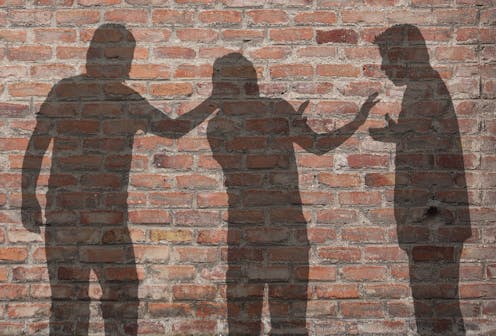If you want to cut bullying in schools, look at the 'invisible violence' in our society
- Written by Ben Arnold Lohmeyer, Adjunct Researcher, Flinders University

A new strategy to tackle bullying of children both inside and outside the school gates was recently released by the South Australian Department of Education.
It has adopted the national definition of bullying that directly links it to a misuse of power. The strategy also questions the role “movies, television, newspapers and the internet” could play in promoting violence.
But bullying is just one way people misuse power to harm others, and violent media as the cause of violent behaviour in young people is an old idea.
Read more: Not every school's anti-bullying program works – some may actually make bullying worse
My research challenges simplistic answers about what causes young people to be violent.
To reduce school bullying we need to look at what is known as the invisible violence that young people are typically exposed to in their everyday lives.
Invisible violence isn’t direct action, such as bullying between people. It’s a feeling of violation experienced through culturally accepted behaviours and power imbalances.
Physical violence can then be thought of as the visible eruption or outpouring of the pressure built up through invisible violating social and power inequalities.
Violent media is not the (only) problem
The new Bullying Prevention Strategy aims to reduce the likelihood of bullying by addressing individual factors, social dynamics and social and cultural factors.
On this last point, the strategy says:
While research in this area is still emerging, there is evidence that social and cultural factors can influence children’s experiences of bullying.
The strategy suggests there is a need to better understand the influence of media on behaviour.
But the idea that violence in movies, games and other media is corrupting young people has been extensively researched and is regularly a source of unwelcome moral panic.
Political leaders are often quick to point the finger of blame at violent video games as the cause of youth violence. In contrast, the results of significant research into a straightforward link between violent media and violent behaviour suggest this idea is inappropriately simplistic.
Sure, plenty of movies and video games glorify violence, and this is clearly visible to young people. But there are other less visible ways that young people are exposed to power inequalities and violence.
Exposure to ‘invisible violence’
My research gathers marginalised young people’s experiences of violence. These are young people who have often been victims or perpetrators of school bullying and violence.
When asked about what violence means to them, they would begin by talking about physical fighting, verbal abuse and sometimes more complex experiences such as self-harm or neglect.
When I asked more, they started describing other power inequalities and abuses that are not typically thought of as violence. They talked about “rolling people for their money” because crime is “what happens with the loop of poverty”.
They saw a system that “rewards you for being upper middle class and white and educated”, and which considered people “not really that violent” if they are nice and polite.
These ideas are not usually thought about as violence. Violence is usually associated with physical force. But these young people saw violence all around them. As one young person described to me:
[…] the violence of our systems and structures of our society that we participate in […] even in just existing, it’s like a violent existence.
This violence is hidden because we don’t think about violence in this way. But this invisible violence tells a story about how young people see who has power and how they use it.
There isn’t a simple correlation between young people seeing or experiencing this kind of violation and then acting out bullying behaviour. Social systems and human behaviour are more complex than that.
But research so far in this space suggests this kind of invisible violence legitimises and justifies interpersonal violence.
This is a new area of research and there are unlikely to be simple answers. But blaming youth violence and bullying on violent media hasn’t produced meaningful ways forward. This issue needs new and creative ways of rethinking the problem and causes of violence among young people.
A big issue in need of answers
An alarming number of Australians experience bullying and violence in schools and workplaces. More than a quarter of students in years 4 to year 9 in South Australian schools and more than a third of all employees in Australia have been bullied at some time.
My research suggests violence isn’t simply something that is inherent to youth or that we grow out of as an adult.
Instead, visible violence and bullying can be thought of as a symptom of invisible violating social inequalities. Young people don’t grow out of violence; they just learn to accept it and hide it in socially acceptable places.
That’s why changing violent behaviours such as bullying in schools requires us to challenge our assumptions about violence. Rather than disparate incidents of bullying between individuals, violence needs to be examined as a pattern of abuses of power and a social narrative that underpins our society and cultural identities.
Authors: Ben Arnold Lohmeyer, Adjunct Researcher, Flinders University



